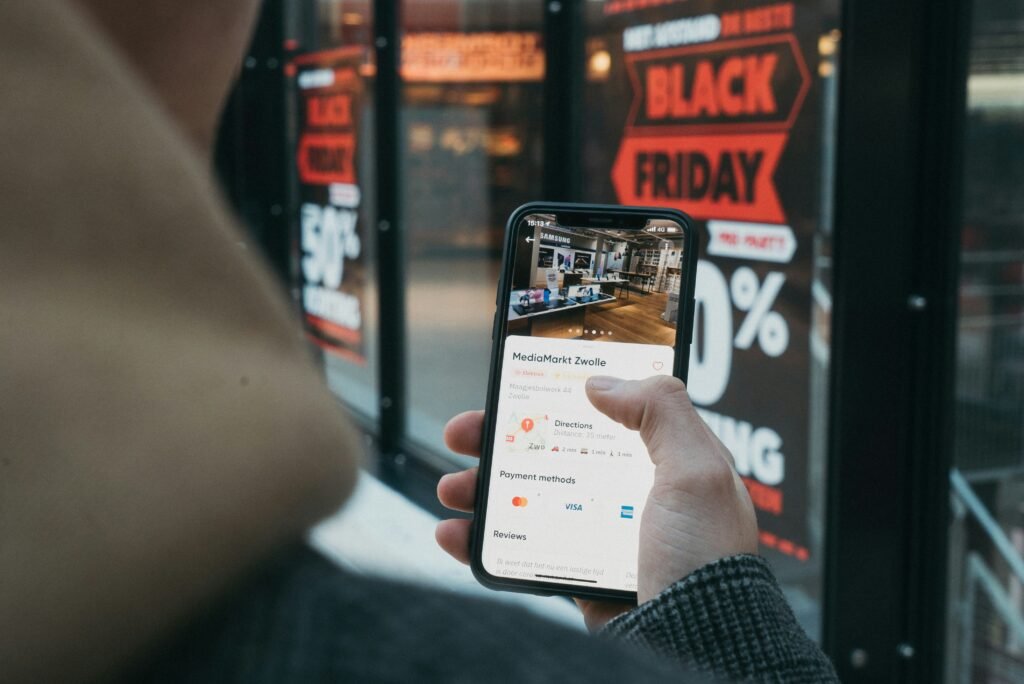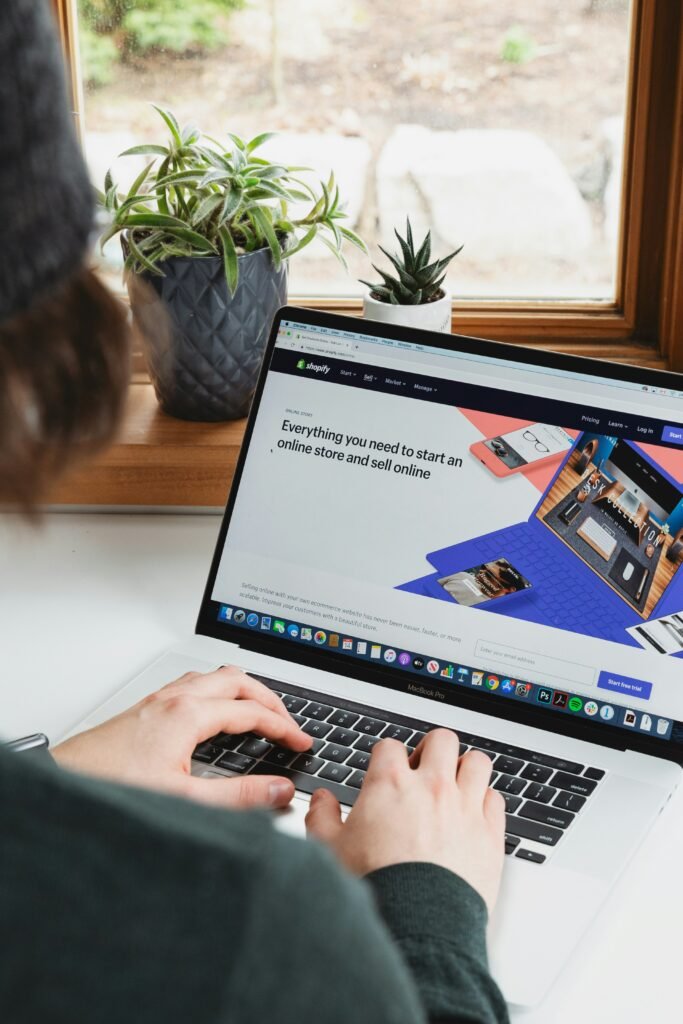In the fast-paced world of e-commerce, where customers rely on the convenience of online shopping, packaging plays a crucial role in ensuring success. From protecting the product during transit to creating a memorable unboxing experience, the packaging design and materials have a significant impact on customer satisfaction and loyalty. This article explores the vital role of packaging in achieving e-commerce success and how businesses can leverage it to stand out in a competitive market.

This image is property of images.unsplash.com.
Importance of Packaging in E-commerce
In the world of e-commerce, packaging plays a crucial role in ensuring the success of online businesses. Not only does it protect the products being shipped, but it also acts as a powerful marketing tool that can enhance brand identity and customer experience. Additionally, packaging plays a vital role in product safety, sustainability, customization, and efficiency. Let’s explore these areas in more detail to understand the importance of packaging in e-commerce.
Protection of Products
One of the primary functions of packaging in e-commerce is to protect the products being shipped. During transit, packages may be subjected to various external pressures, such as rough handling, temperature changes, or even accidental drops. Therefore, it is essential for packaging to provide sturdy and reliable protection to ensure that the products reach customers in perfect condition.
Whether it’s fragile items like glassware or electronic devices or perishable goods like food and flowers, proper packaging can minimize the risk of damage and breakage. This not only saves businesses from incurring losses due to damaged goods but also ensures customer satisfaction by delivering products intact and usable.
Brand Identity and Image
Packaging in e-commerce goes beyond its utilitarian purpose of protecting products. It acts as a powerful branding tool that helps businesses establish their identity and create a lasting impression on customers. The design, color, and overall aesthetics of the packaging can be strategically used to reflect the brand’s values, target audience, and product quality.
When customers receive a well-designed package that aligns with the brand’s image, it enhances their perception of the company. The packaging becomes an extension of the brand, allowing customers to form a connection and build brand loyalty. By investing in attractive and visually appealing packaging, e-commerce businesses can elevate their brand image and differentiate themselves from competitors.
Customer Experience and Satisfaction
Packaging directly impacts the overall customer experience when shopping online. From the moment the package arrives at the customer’s doorstep to the unboxing experience, packaging plays a significant role in shaping customer satisfaction and loyalty. A thoughtfully designed package can turn a routine delivery into a delightful experience for customers.
By incorporating elements that surprise and excite customers, such as personalized messages, free samples, or unique packaging materials, businesses can elevate the unboxing experience. This creates a sense of joy and anticipation and makes customers feel valued and appreciated.
Furthermore, well-designed packaging also makes it easier for customers to understand the product and its features. Clear labeling and informative packaging can enhance the overall user experience, reducing the chances of confusion or dissatisfaction.
Packaging as a Marketing Tool
Creating a Memorable Unboxing Experience
Unboxing experiences have gained immense popularity in recent years, with countless videos and dedicated social media accounts showcasing the joy of opening well-packaged products. By investing in creative and memorable unboxing experiences, e-commerce businesses can leave a lasting impression on their customers.
Introducing unique packaging elements, such as custom tissue paper, ribbons, or branded stickers, can make the unboxing process feel like a special occasion. When customers have a positive and enjoyable unboxing experience, they are more likely to share their excitement with others, leading to increased brand visibility and word-of-mouth referrals.
Creating a Sense of Excitement and Anticipation
Packaging can also be used to create a sense of excitement and anticipation for customers. By incorporating teasers or small surprises within the packaging, businesses can generate buzz and build anticipation for the products. This not only increases customer engagement but also encourages them to share their experience on social media platforms, amplifying the brand’s reach.
Including exclusive discount codes, personalized thank-you notes, or product sneak peeks can provide customers with an added incentive to make repeat purchases and become brand advocates. When customers feel valued and appreciated through unique packaging experiences, they are more likely to develop long-term loyalty towards the brand.
Utilizing Packaging for Branding and Promotion
Packaging serves as a valuable marketing tool in e-commerce by providing a canvas for branding and promotion. Every package that leaves a business’s warehouse is an opportunity to display the brand’s logo, colors, and taglines, creating visibility and increasing brand recognition.
By effectively utilizing packaging for branding, businesses can strengthen brand recall and make a memorable impression on customers. Potential customers who come across a well-packaged shipment may become curious about the brand and seek more information online, leading to potential sales and growth.
Branded packaging can also act as a form of free advertising when customers reuse or repurpose packaging materials. When a package is seen again in a different context, it serves as a reminder of the brand and its products, potentially influencing purchasing decisions in the future.
Packaging and Product Safety
Ensuring Product Integrity
Product safety is a critical consideration for e-commerce businesses, as damaged or defective products can lead to dissatisfied customers and negative reviews. Packaging plays a crucial role in ensuring the integrity of the products during transit.
By selecting appropriate packaging materials and employing effective cushioning techniques, businesses can protect their products from external shocks and vibrations. Bubble wrap, foam inserts, and air pillows are commonly used to provide additional padding and safeguard delicate items from breakage.
Additionally, securing products within the packaging using tapes, adhesives, or straps can prevent them from shifting during transportation, further reducing the risk of damage. Properly sealed packaging also prevents moisture or environmental factors from compromising the product’s quality.
Protecting Fragile and Perishable Items
Certain e-commerce businesses deal with fragile or perishable items that require specialized packaging solutions. Fragile items like glassware, electronics, or artwork need additional layers of protection to prevent any potential damage during transit.
Bubble wrap, corrugated cardboard inserts, or custom-designed protective containers can help absorb shock and protect fragile items from impact. Furthermore, labeling packages as “fragile” can alert shipping carriers and delivery personnel to handle them with extra care.
Similarly, perishable goods such as food, flowers, or cosmetics with short shelf lives require temperature-controlled and insulated packaging. This ensures that the products remain fresh and intact until they reach the customer’s doorstep.
Sustainability and Eco-friendly Packaging
Reducing Environmental Impact
In an era where environmental concerns are increasingly gaining attention, adopting sustainable packaging practices is not only ethical but also a competitive advantage. E-commerce businesses can align their operations with sustainable principles by using packaging materials that have minimal environmental impact.
Opting for recyclable materials like cardboard, paper, or corrugated boxes instead of single-use plastics can significantly reduce waste and carbon emissions. These materials can be easily recycled or repurposed, contributing to a circular economy.
Additionally, businesses can explore innovative packaging solutions like biodegradable or compostable materials, which decompose naturally and have minimal impact on ecosystems. By prioritizing sustainability, e-commerce businesses can attract environmentally conscious consumers and build a positive brand reputation.
Utilizing Recyclable and Biodegradable Materials
Choosing recyclable and biodegradable packaging materials not only benefits the environment but also helps in complying with sustainability regulations. Recyclable materials can be reused for various purposes, reducing the need for new packaging materials and conserving resources.
Biodegradable materials, on the other hand, break down naturally over time without causing harm to the environment. These materials are derived from renewable sources and can be composted, reducing the accumulation of non-degradable waste.
By clearly labeling packaging materials as recyclable or biodegradable, businesses can also educate customers about their commitment to sustainability, encouraging them to dispose of the packaging responsibly.

This image is property of images.unsplash.com.
Customization and Personalization
Tailoring Packaging to Different Products
Not all products are the same, and packaging plays a significant role in ensuring that each item is appropriately packaged and presented to customers. Tailoring packaging to suit different product types and sizes not only enhances the overall customer experience but also provides adequate protection during transit.
For smaller products, like jewelry or accessories, businesses can opt for compact and aesthetically pleasing packaging. This allows customers to unbox the items easily without unnecessary bulk.
On the other hand, larger products like furniture or electronics may require customized packaging solutions that accommodate their size and weight. Using sturdy and durable materials combined with appropriate cushioning ensures that these products reach customers undamaged.
Adding Personalized Messages or Custom Designs
Personalization adds a touch of exclusivity and creates a deeper connection between the customer and the brand. By including personalized messages, handwritten notes, or special offers within the packaging, businesses can make customers feel valued and appreciated.
Custom-designed packaging, featuring unique artwork, branding elements, or QR codes that lead to personalized content, can also enhance the package’s appeal. This level of customization not only enhances the unboxing experience but also contributes to brand loyalty and positive customer reviews.
Optimizing Packaging for Efficiency
Streamlining Packaging Processes
Efficiency is crucial in e-commerce, where thousands of packages may need to be prepared and shipped daily. Streamlining packaging processes helps businesses save time, reduce costs, and increase productivity.
Investing in automated packaging equipment, like box-making machines or automated tape dispensers, can significantly speed up the packaging process. These tools help lower the margin of error and ensure consistent packaging quality, regardless of the volume.
Implementing barcode or RFID labeling systems improves inventory management and facilitates seamless order fulfillment. By automating labeling processes, businesses can eliminate human errors, increase order accuracy, and reduce delays in shipping.
Choosing Appropriate Packaging Sizes and Materials
Efficient packaging should strike a balance between protecting the product and reducing unnecessary material usage. Selecting the appropriate packaging size and materials significantly impacts shipping costs, storage space, and overall sustainability.
Right-sizing packaging involves using the smallest possible box or envelope that adequately accommodates the product. This reduces unused space within the package, leading to lower shipping costs and minimizing the need for void fillers.
Using lightweight packaging materials, such as corrugated cardboard, not only reduces the overall weight of the shipment but also helps lower shipping costs. Additionally, lightweight materials are easier to handle during the packaging process, reducing the risk of workplace injuries.

This image is property of images.unsplash.com.
Packaging and Shipping Costs
Reducing Shipping Costs Through Efficient Packaging Design
Shipping costs can significantly affect the profitability of e-commerce businesses. Inefficient packaging design may lead to oversized packages, resulting in higher dimensional weight charges imposed by shipping carriers.
To mitigate this, businesses can design packaging that optimally fits their products, reducing unnecessary empty space. By using tools like dimensional weight calculators provided by shipping carriers, e-commerce businesses can ensure they are using the most cost-effective packaging.
Additionally, exploring shipping options like flat-rate boxes or pre-paid shipping labels can help businesses minimize shipping costs for certain products. Negotiating shipping rates with carriers based on volume can provide further savings in the long run.
Optimizing packaging design not only reduces shipping costs but also streamlines the order fulfillment process and helps ensure on-time deliveries, enhancing customer satisfaction.
The Role of Packaging in Return and Exchange Processes
Ensuring Easy and Hassle-free Returns
Easy return processes are crucial for maintaining customer trust and satisfaction in e-commerce. Packaging plays a vital role in simplifying the return and exchange processes, making them hassle-free for both customers and businesses.
By providing customers with clear instructions and pre-printed return labels, businesses can eliminate confusion and reduce the effort required to initiate returns. Designing packaging that can be easily resealed or reassembled for returns simplifies the process and ensures that returned items are protected during transit.
Thoughtful packaging designed with returnability in mind helps businesses recover returned products with minimal damage or loss, increasing the chances of resale or refurbishment.
Reducing Damages During Return or Exchange
When products are returned or exchanged, it is crucial that they arrive back to the business in the same condition they were sent to the customer. Proper packaging is essential in reducing damages during the return or exchange process.
By providing customers with packaging solutions specifically designed for returns, businesses can ensure that products are protected during transit. Including additional packaging materials, such as bubble wrap or padded envelopes, with return instructions allows customers to secure the item effectively.
Furthermore, prompt inspection and assessment of returned items upon receipt enable businesses to identify any damages or defects quickly. This ensures that customers receive appropriate refunds or replacements and helps maintain a reputation for excellent customer service.
Packaging and Customer Reviews and Referrals
Impacting Customer Satisfaction and Word of Mouth
The packaging experience significantly influences customer satisfaction, and satisfied customers often share their positive experiences with others. Providing customers with exceptional packaging can drive positive word of mouth and encourage them to leave rave reviews and recommendations.
When customers receive well-packaged products that exceed their expectations, they are more likely to share their positive experiences on various review platforms or social media channels. These reviews and recommendations act as valuable endorsements and contribute to building the brand’s reputation and credibility.
Conversely, poor packaging experiences can result in negative reviews and dissatisfied customers. It is essential for e-commerce businesses to prioritize packaging quality and ensure that every package represents the brand positively.
Promoting Positive Product Reviews and Referrals
Packaging can play a role in encouraging customers to leave product reviews and referrals. Including personalized thank-you notes, QR codes leading to review platforms, or incentivizing customers to share their experiences can increase the likelihood of positive engagement.
Businesses can leverage packaging design to prompt customers to leave reviews or refer friends and family to the brand. By making the process seamless and convenient, such as with pre-filled review forms or referral codes, businesses can actively promote positive customer engagement.
Positive product reviews and referrals not only boost the brand’s online presence but also attract new customers who trust the recommendations of existing satisfied customers.
Innovations in E-commerce Packaging
Using Smart Packaging Technology
Technological advancements have paved the way for innovative solutions in e-commerce packaging. Smart packaging technology integrates electronics, sensors, or interactive elements into packaging, enhancing the customer experience and providing additional functionalities.
For instance, intelligent shipping boxes equipped with GPS trackers or embedded sensors can provide real-time location updates to customers, giving them peace of mind and transparency regarding their package’s journey.
Augmented reality (AR) or virtual reality (VR) packaging experiences can elevate the unboxing process by offering interactive and immersive content. Customers can engage with product demonstrations, 3D models, or virtual tours, enhancing their understanding of the product and fostering a stronger connection with the brand.
Integrating technology into packaging not only adds value to the customer experience but also creates opportunities for businesses to collect data and gain valuable insights into consumer behavior and preferences.
Utilizing Sustainable Packaging Solutions
The rapid growth of e-commerce has led to an increased focus on developing sustainable packaging solutions. Businesses are actively exploring alternatives to traditional packaging materials, such as plastics, that have adverse environmental impacts.
Some innovative sustainable packaging solutions include mushroom-based packaging, made from mycelium, which is organic, biodegradable, and compostable. This packaging material is suitable for replacing styrofoam or other non-recyclable cushioning materials.
Another eco-friendly option is edible packaging, created from materials like seaweed or starch-based compounds. Edible packaging not only reduces waste but also eliminates the need for additional disposal efforts.
By embracing such sustainable packaging solutions, e-commerce businesses can minimize their ecological footprint, appeal to environmentally conscious consumers, and contribute to a more sustainable future.
In conclusion, packaging plays a multifaceted role in ensuring the success of e-commerce businesses. Apart from protecting products, it acts as a marketing tool, creates memorable experiences, and enhances brand identity. Packaging also contributes to product safety, sustainability, customization, efficiency, and cost reduction. Additionally, it influences return processes, customer reviews, and referrals. With innovations in packaging technology and a growing emphasis on sustainability, the packaging industry continues to evolve, providing opportunities for e-commerce businesses to enhance their operations and customer experience. By recognizing the importance of packaging and investing in high-quality, well-designed packaging solutions, businesses can differentiate themselves in a competitive e-commerce landscape and drive success.
